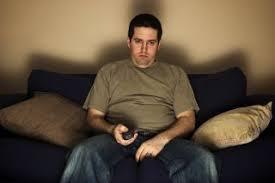There Are 5 Types Of Boredom. Which Are You Feeling?
Curated from: fastcompany.com
Ideas, facts & insights covering these topics:
5 ideas
·2.01K reads
15
1
Explore the World's Best Ideas
Join today and uncover 100+ curated journeys from 50+ topics. Unlock access to our mobile app with extensive features.
Apathetic Boredom
Unpleasant, but causes low levels of arousal and a lack of positive or negative feelings–in other words, a feeling of helplessness or depression.
It’s a common kind of boredom, which is worrisome given that studies have shown that boredom, depression, and destructive behaviors are often linked.
105
495 reads
Reactant Boredom
The highest levels of arousal and negative emotions. It reflects significant restlessness and aggression.
A person in a reactant boredom state has persistent thoughts about specific, “more highly valued alternative situations”, a strong motivation to escape their boring situation and those responsible for it.
84
373 reads
Searching Boredom
A more negative feeling reflecting a sense of unpleasant restlessness and an active search for ways out of the boredom mindset. A person might think about alternative activities, hobbies, leisure, or work.
82
406 reads
Calibrating Boredom
A slightly unpleasant emotional state associated with receptiveness to “boredom-reducing options, ” but not necessarily an active search for them. Characterized by wandering thoughts, not knowing what to do, and a “general openness” to activities unrelated to the present situation.
82
346 reads
Indifferent Boredom
A person who is calm and withdrawn from their external world. Words reflecting this kind of boredom include “relaxation” and “cheerful fatigue. ”
79
399 reads
IDEAS CURATED BY
Damien 's ideas are part of this journey:
Learn more about personaldevelopment with this collection
Ways to improve productivity
Strategies for reducing stress
Tips for managing email overload
Related collections
Similar ideas
Read & Learn
20x Faster
without
deepstash
with
deepstash
with
deepstash
Personalized microlearning
—
100+ Learning Journeys
—
Access to 200,000+ ideas
—
Access to the mobile app
—
Unlimited idea saving
—
—
Unlimited history
—
—
Unlimited listening to ideas
—
—
Downloading & offline access
—
—
Supercharge your mind with one idea per day
Enter your email and spend 1 minute every day to learn something new.
I agree to receive email updates





